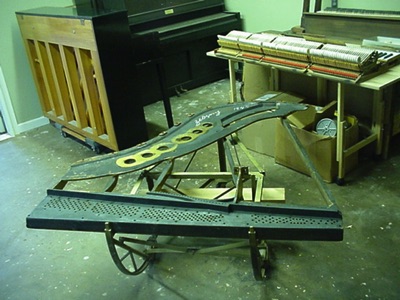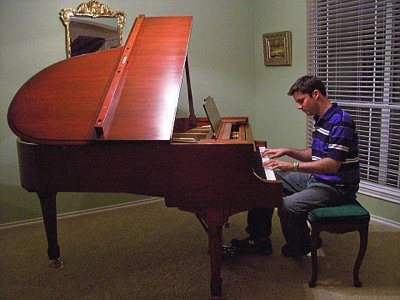

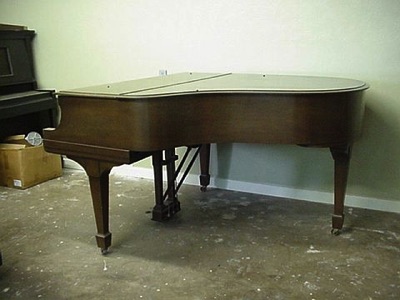
1923 Steinway M Grand
This 1923 Steinway M Grand has been in one family for quite some time, now passed on to the third generation.
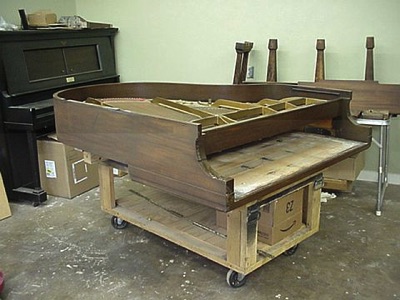
Stripping the case revealed a mahogany veneer that had been ebonized, then painted white and finally glazed brown.
There were the usual dents and dings and a couple of places where the veneer had been sanded through completely. The veneer around these spots was paper thin.
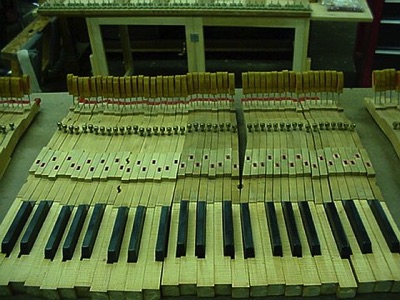
The key sticks are cleaning up nicely.
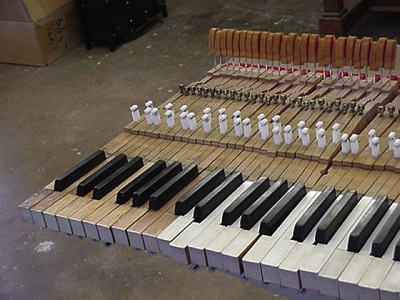
We replaced key bushings, tops, damper lifter felt and were able to clean up the back check buckskin nicely.
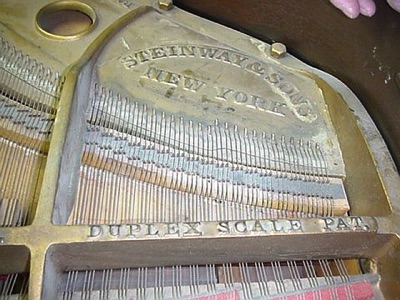
Although not excessively played, the instrument was a victim of the vagaries of North Texas weather.
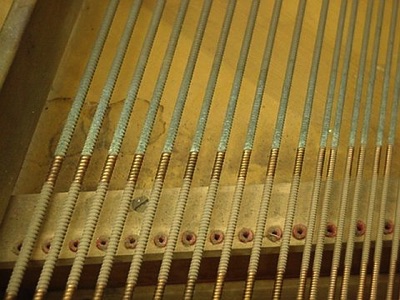
The copper wound bass strings were subjected to a leaky roof after a tornado in 1979.
The only area unaffected was underneath the dampers.
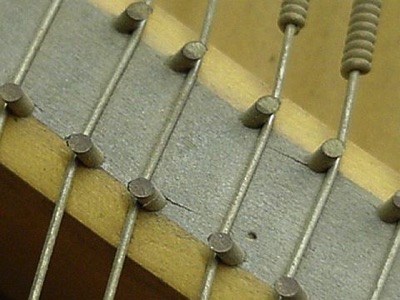
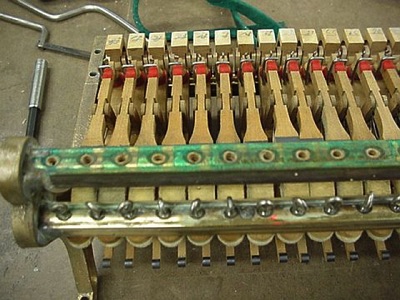
The bridges were in remarkably good shape with only minor splits at the bridge pins on a few notes
Verdigris has spread from the hammer flanges to the hammer rail.
Legend has it that the flanges were dipped at the factory in a witch's brew of molten mutton tallow and other assorted goodies.
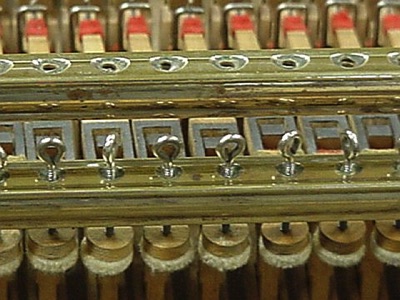
Whatever the source, the rails cleaned up after a bit of hand work and persistence.
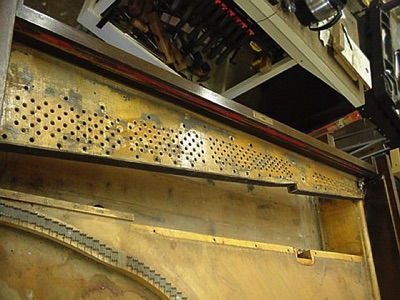
The original pin block also received some water from the roof leak.
We decided to replace the pin block but not the soundboard.The original soundboard showed decent crown and tone prior to destringing.
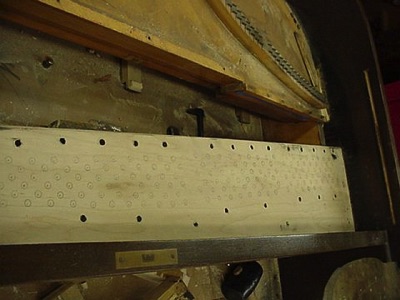
The new fully fitted pin block prior to being drilled for the tuning pins.
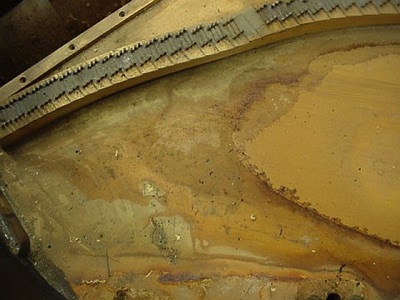
Here is an area of water staining hidden under the plate that fortunately did not penetrate the finish on the soundboard
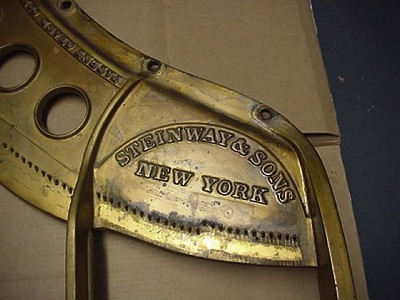
The bottom of the plate still had the chalk marking of the bellyman from 1923.
Above and behind the plate is the finished action.
The plate was soiled and cleaning failed to remove the staining.
We ended up lightly sandblasting the plate to provide a good surface for the bronze gilding.
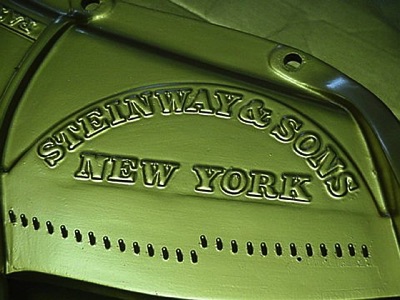
The finished plate awaits hand lettering.
The final finish on the plate makes all the prep work worthwhile.
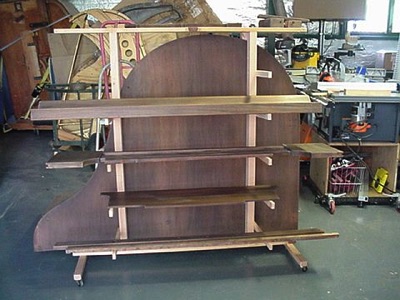
The shop parts rack holds all removable case parts
This case will have to be dyed and toned to achieve the finish the customer requires.
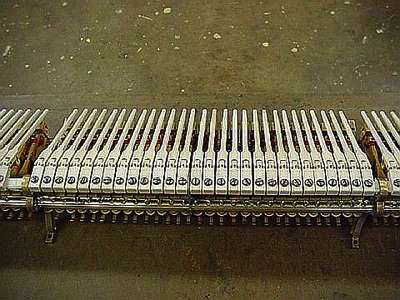
New shanks from Steinway and Sons, New York.
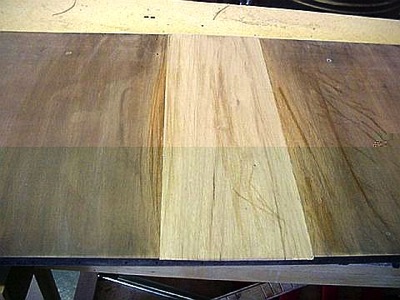
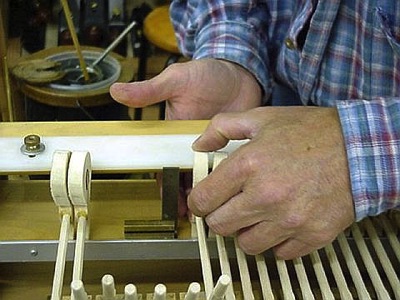
New York Steinway hammers being hung.
This action was balanced and regulated to average of 49 grams of downweight.
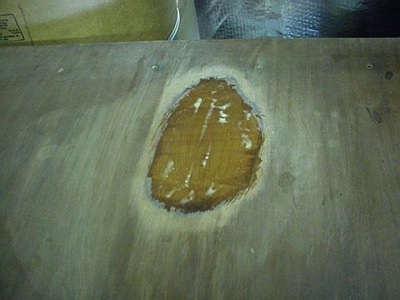
Here is one of the places a previous refinisher created on the bottom of the small lid.
This piece of mahogany was the closest in grain that we could find.
We will have to deal with color in the finishing process.
The patched veneer is in the center of the small lid adjacent to the lock.
My friend,Charles Lewis, claims that this repair cannot be found.
Another angle on the lid and picture of a happy customer.
By the way, this young man can play, South Louisiana style!
© Ward and Probst, Inc-1998-2014
